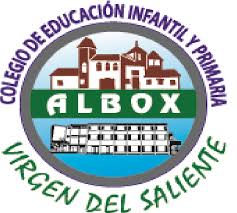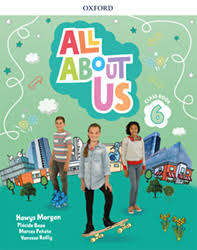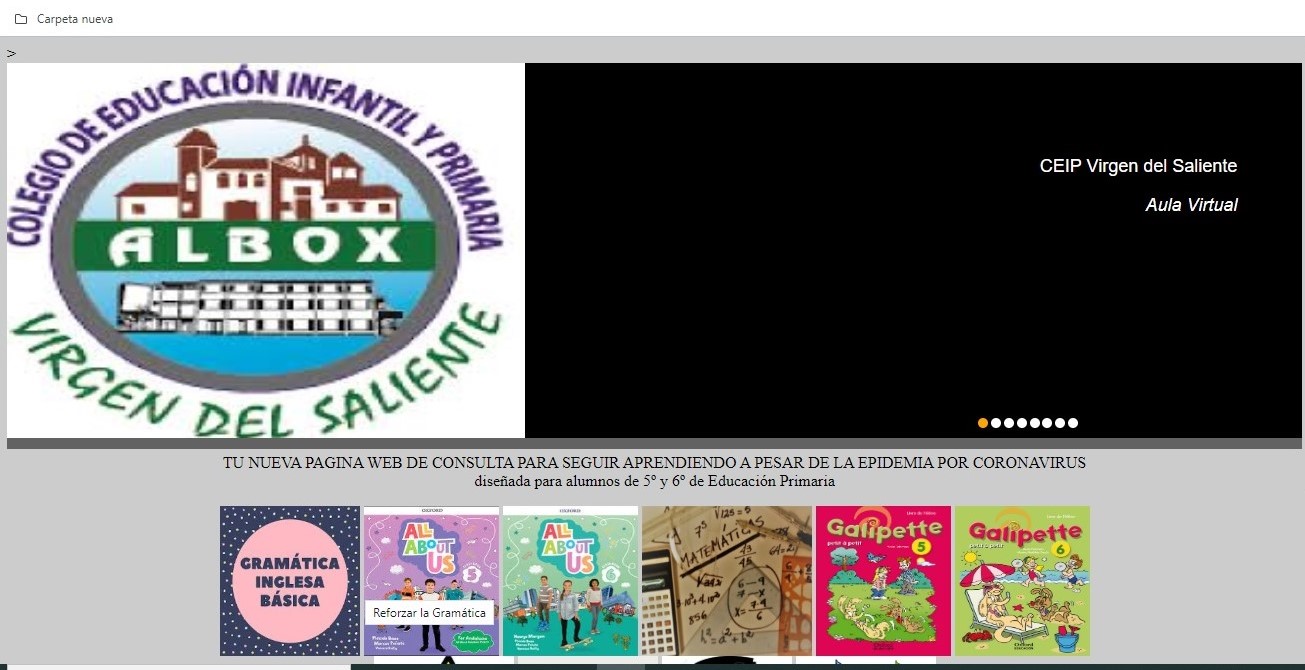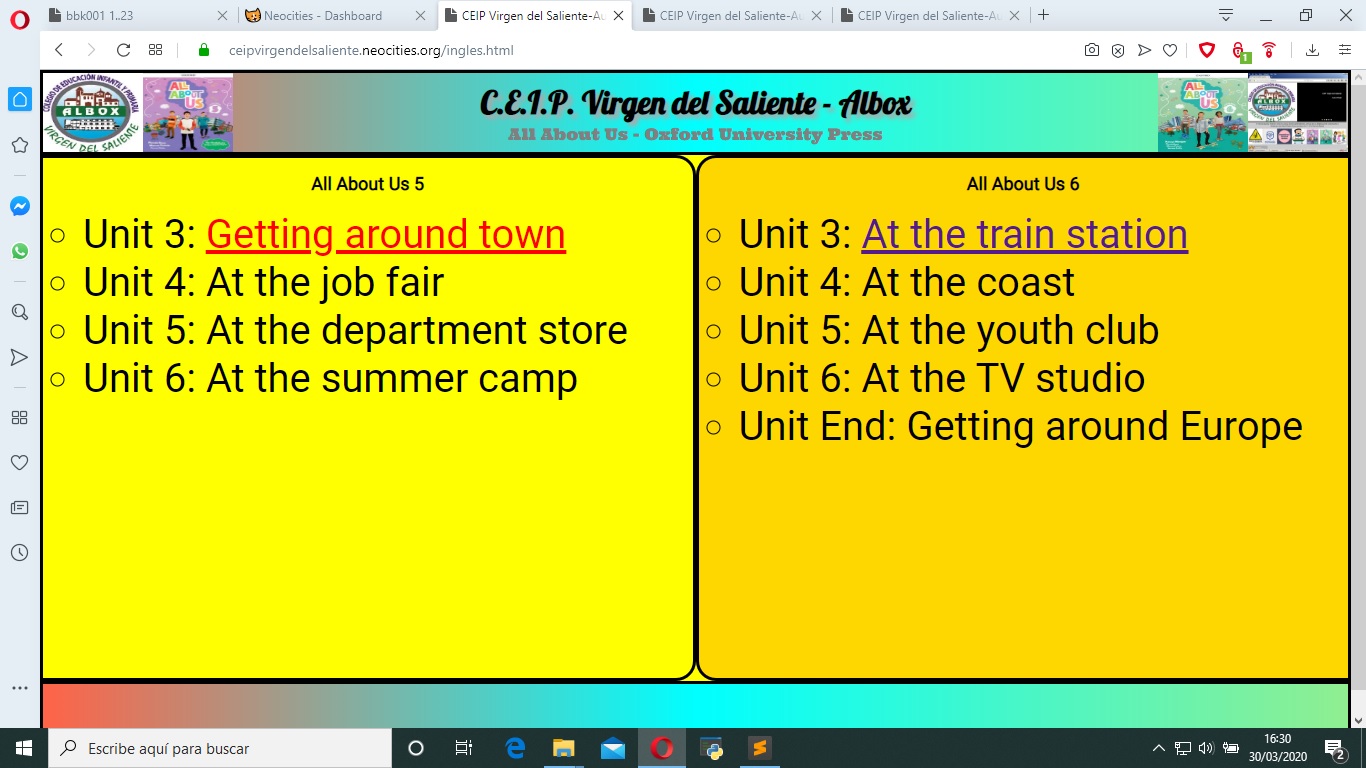Unit 1: Chatting with my friends
Lesson 1: Vocabulary (page 6)
1. Watch, read and understand.
Visita la página de Gramática Básica y estudia el verbo can. Haz las siguientes actividades:
Después trata de comprender el diálogo del vídeo.Daisy: Hello! I want to phone my friend Zoe. But I can’t find my mobile phone. Where is it? Ah! Here are my headphones, and here’s my laptop. Finally, here’s my mobile phone. It was under my jumper. I have to tidy my bedroom!
2. Listen and repeat the vocabulary
Dictation. On your notebook, write the words you hear and check your answers looking at the book
Dictado. En tu cuaderno, escribe las palabras del audio y comprueba tus respuestas mirando el libro.
3. Listening to the audio and looking at the picture on page 6, find out which number the speaker is saying.
Escuchando el audio y mirando el dibujo de la página 6, averigua el número.
4. Copy the sentences on your notebook and write the activity. ACTIVIDAD GOOGLE CLASSROOM
5. ACTIVIDAD: Can you describe the objects in your bedroom? Write about it in no more than 5 lines
Lesson 2: Grammar (page 7)
1. Possessives and the Past.
Visit BASIC GRAMMAR: Possessives, verb to have and verb to be in the past and try to understand the activities 1 and 2 on this page.
En la página de GRAMÁTICA INGLESA BÁSICA, accede a los apartados Adjetivos y Pronombres Posesivos, verbo to have y verbo to be en pasado y haz sus Actividades para entender la lectura de la actividad 1 y el recuadro de la actividad 2.
2. Listen and read. Try to answer: Is the blue memory stick Daisy's?
ACTIVIDAD: La respuesta a esta pregunta.
Escucha varias veces mirando el texto y léelo después.
3. Possessives adjectives versus Possessives pronouns.
Visita Gramática Inglesa Básica y estudia Verb to Have, Possessive Adj. y Possessive Pronouns. Haz las siguientes actividades:4. The avatar game. Write how people in activity 3 have got their hair.
ACTIVIDAD: Mirando la tabla de la actividad 3, escribe cómo tienen el pelo las personas que allí aparecen. Averigua adjetivos en inglés para liso, rizado, etc.
PRESENT CONTINUOUS
actividad 1 -
actividad 2 -
Actividad EVALUABLE
PRESENT SIMPLE
actividad 3 -
actividad 4 -
Audio
Lesson 3: Culture (page 8)
1. Watch, What museum do they visit?
Observa y dí ¿Qué museo visitan?
Culture film:
In the past there weren’t any computers at school or at home. There weren’t any laptops … digital cameras … or memory sticks. Can you imagine life without these things?
This is the National Museum of Computing. You can find out about the history of computing. Computers were very, very big in the past! Look at this computer. It’s called Colossus. It’s about 75 years old. Imagine using this computer to do your homework! Some computers from the past are smaller than Colossus, but they’re still much bigger than a laptop or a tablet. These computers are about 25 years old. They still work, but they are very different to computers today. You can’t use the internet, or send an email with these computers … but you can play computer games! They’re very simple games, but they’re still fun! Look! This is a special computer. It teaches people how to fly a plane. It’s a bit like a computer game. They’re using headphones. It looks fun!
Today, computers are everywhere. We can play computer games and we can even make our own computer games. We use computers at school. We can use them to find out information or to do our homework. And we can use laptops or tablets in our bedrooms or living rooms or even out in the garden. What do you use computers for?
Traduce el texto del vídeo a español. Así, lo entenderás mejor.
2. Listen and try to answer: What kind of energy does the laptop use? ¿Qué significa esta pregunta?
Is it his or hers? ¿Y ésta?
Ve al apartado de GRAMÁTICA BÁSICA y repasa: verbo to can y pronombres y adjetivos posesivos.
ACTIVIDAD: Responde en inglés a las dos preguntas anteriores.
Watch carefully and practice the dialogue.
Reproduce varias veces el vídeo y practica el diálogo.
Traduce al español la conversación entre estos alumnos.
Lesson 4: Cross curricular (page 9)
Watch the video and:
Look for the meaning of these words in Spanish: profile, blog, chat room, gallery.
ACTIVIDAD: How can you keep safe on line?
Do the quiz at the end of the video.
ACTIVIDAD: Responde en inglés a las preguntas del ejercicio 3, página 9.
Lesson 5: Story (pages 10 and 11)
First, watch the story: In the game. Then, look at the comic in your book.
ACTIVIDAD: Answer the questions in activity 3 at page 11.
Lesson 7: Song and skills (page 13)
Enjoy the song: "You don't need technology".
Disfruta la canción: "No necesitas la tecnología".
Ve a GRAMÁTICA BÁSICA y repasa: verb to can.
Zoe : Today’s song is about technology.
Daisy: Did you write it, Peter? You’re always on your mobile phone!
Peter: Zoe and I wrote it together.
Daisy: Hello. Here’s the new song for the vlog. It’s about technology. Peter wrote it.
Zoe : And don’t forget me, Daisy. I wrote it, too.
Daisy: Sorry, Zoe. Peter and Zoe wrote this song. We hope you enjoy it.
Listen and repeat.
Listen and repeat the tongue twister.
Lesson 8: Language Review (page 14)
Listen to Daisy and her friend. Answer this question: Which 4 technology words do they mention?
laptop - mobile phone - email adress - tablet - avatar - memory stick
headphones - password - webcam - emoji - chat room - blog
Activity 2. Listen again. Read and correct.
Be: Was/Were (1) - Was/Were (2) - Have: Had
Past (1) - Past (2) - Past (3) - Past (4)
Lesson 9: Comprehension (page 15) and Conversation (page 83)
Listen to Daisy and her friends. Which 4 things do they mention?
emoji - blog - comet - password - table - profile - avatar - spaceship





